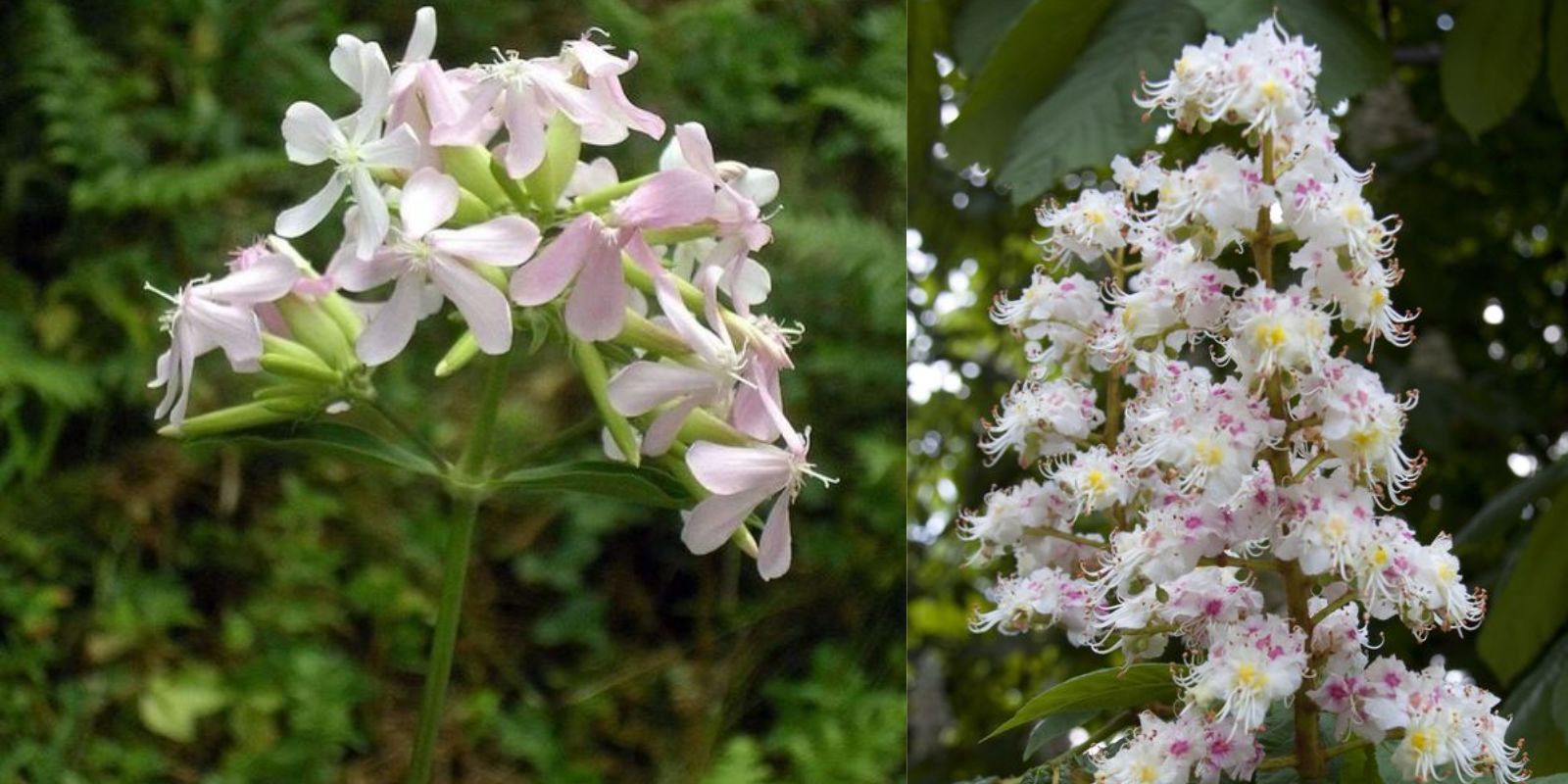In a world where natural and eco-friendly solutions are increasingly valued, utilizing plants as soap is a fascinating and practical approach. Many plants contain natural saponins, compounds that create a lathering effect similar to conventional soap. By incorporating these plants into your routine, you not only embrace a more sustainable lifestyle but also connect with age-old traditions of natural cleansing. This article will explore seven remarkable plants that can be used as soap, offering guidance on how to prepare and use them effectively.
1. Soapwort (Saponaria officinalis)
Overview
Soapwort is one of the most well-known plants used as soap due to its high saponin content. Native to Europe and Asia, it has been used for centuries for its gentle, natural cleaning properties.
How to Use
- Harvesting: Collect the leaves and stems of the soapwort plant.
- Preparation: Crush or mash the plant parts and mix them with water to release the saponins.
- Application: The resulting lather can be used for washing delicate fabrics, dishes, or even for personal hygiene.
Benefits
- Gentle on Skin: Soapwort is mild and ideal for sensitive skin.
- Eco-Friendly: Reduces the need for synthetic detergents and soaps.
2. Yucca (Yucca spp.)
Overview
Yucca plants, native to the Americas, are known for their striking, sword-like leaves and high saponin content. They are a versatile plant that has been used traditionally for cleaning and washing.
How to Use
- Harvesting: Use the roots of the yucca plant.
- Preparation: Boil the roots in water to extract the saponins.
- Application: Strain the mixture and use it as a soapy solution for cleaning.
Benefits
- Effective Cleansing: Yucca roots produce a rich lather that is effective for cleaning various surfaces.
- Sustainable: Yucca cultivation is generally low-impact, making it an eco-friendly choice.
3. Horse Chestnut (Aesculus hippocastanum)
Overview
Horse chestnut, often associated with its striking conkers, contains saponins that can be used for cleaning. This plant is native to the Balkans but has spread widely and is known for its practical applications.
How to Use
- Harvesting: Collect the seeds (conkers) of the horse chestnut.
- Preparation: Crush the seeds and mix them with water to create a soapy solution.
- Application: Use the mixture for washing dishes, laundry, or as a body wash.
Benefits
- Natural Cleaning Power: Horse chestnut provides a strong lather, making it effective for various cleaning tasks.
- Alternative Use: Provides an alternative to synthetic cleaning products.
4. Quillaia (Quillaia saponaria)
Overview
Quillaia, also known as soap bark tree, is native to South America and is highly valued for its saponin-rich bark. It has been used traditionally by indigenous people for its soap-like properties.
How to Use
- Harvesting: Collect the inner bark of the quillaia tree.
- Preparation: Boil the bark in water to release the saponins.
- Application: Strain the solution and use it for cleaning purposes.
Benefits
- Strong Lather: Quillaia bark produces a strong, stable lather.
- Traditional Use: Has a long history of use in various cultures for cleaning.
5. Saponaria (Saponaria species)
Overview
Saponaria species, commonly known as soaproot, are rich in saponins and have been used in traditional medicine and cleaning. They are native to various regions, including North America and parts of Europe.
How to Use
- Harvesting: Collect the roots of the saponaria plant.
- Preparation: Boil the roots in water to extract the saponins.
- Application: Use the resulting soapy water for cleaning dishes, laundry, or personal hygiene.
Benefits
- Natural Ingredients: Provides a natural alternative to chemical soaps.
- Versatile: Suitable for a range of cleaning applications.
6. Soapberry (Sapindus spp.)
Overview
Soapberry, or soapnut, is a fruit-bearing plant that contains saponins in its berries. Native to tropical and subtropical regions, soapberry has been used for centuries for its natural soap properties.
How to Use
- Harvesting: Collect the dried berries of the soapberry plant.
- Preparation: Boil the berries in water or use them directly in their dried form to create a soapy solution.
- Application: Use the resulting liquid for cleaning or as a detergent alternative.
Benefits
- Natural Cleanser: Soapberry provides a natural, biodegradable cleaning solution.
- Eco-Friendly: Reduces reliance on synthetic detergents and is biodegradable.
7. Cleansing Grass (Eclipta prostrata)
Overview
Cleansing grass, also known as Eclipta prostrata, is a plant with traditional uses in various cultures. It contains saponins that can be utilized for their soap-like properties.
How to Use
- Harvesting: Collect the leaves and stems of the plant.
- Preparation: Crush the plant material and mix with water to produce a soapy lather.
- Application: Use the mixture for cleaning purposes, such as washing dishes or personal hygiene.
Benefits
- Traditional Uses: Has a long history of use for cleansing and skin care.
- Natural Alternative: Provides an alternative to chemical-based soaps.
Tips for Using Plants as Soap
- Test for Sensitivities:
- Always test the plant-based soap on a small area of skin to ensure there are no allergic reactions.
- Ensure Proper Storage:
- Store any prepared soap solutions in clean, airtight containers to maintain their effectiveness.
- Combine with Other Ingredients:
- Experiment with combining these natural soaps with essential oils or other natural additives for enhanced fragrance and additional benefits.
- Educate Others:
- Share your knowledge about plant-based soaps with friends and family to promote sustainable living.
Conclusion
Incorporating plants as soap into your daily routine offers a sustainable and eco-friendly alternative to synthetic cleaning products. By utilizing the natural saponins in these plants, you not only benefit from their cleansing properties but also contribute to a more environmentally conscious lifestyle. From soapwort to soapberry, each of these seven plants provides unique benefits and offers a natural solution for your cleaning needs.
Explore these plants and discover the advantages of using nature’s own soap. Embrace the opportunity to integrate these traditional practices into your modern life and enjoy the benefits of natural, plant-based cleaning. 🌿

